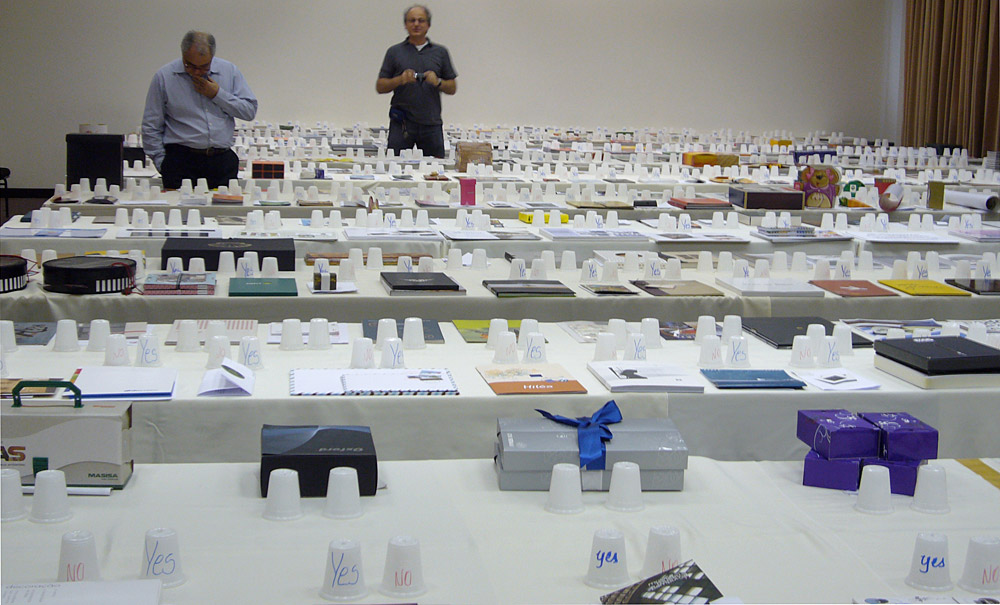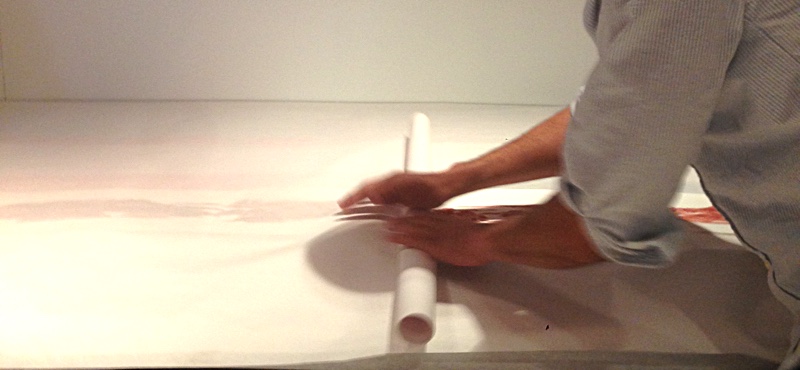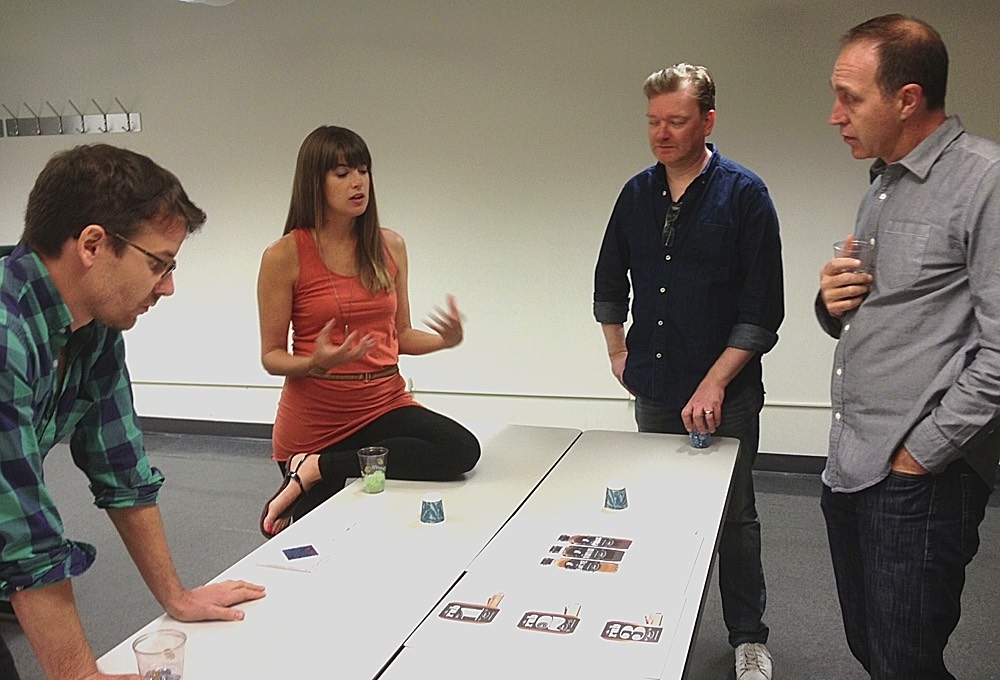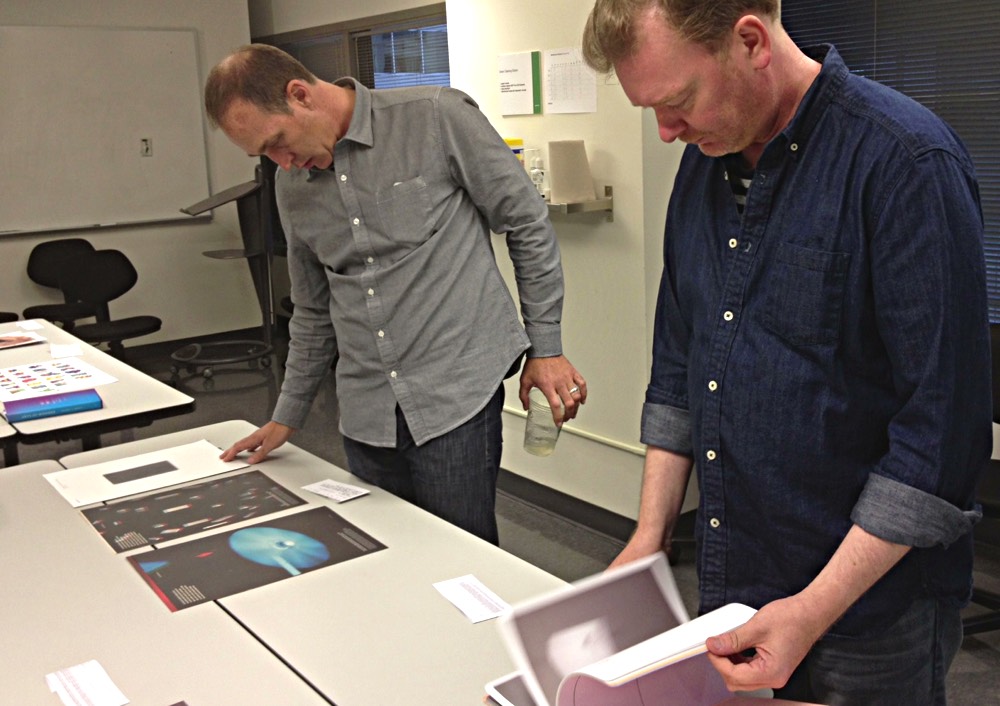
What is judging an awards show like?
Depending on the show, it is usually exhausting. Most national and international shows have a lot of entries; some of them have a mind-boggling number of entries, so it is a lot of work, usually spent on your feet. But it is also usually fun, especially if you get a group of judges that clicks, and educational.
There’s always an organizational team that catalogues, sets up, and keeps track of all the entries. The amount of work they do is crazy. Imagine having to lay out and pack up thousands of pieces of work, many of them with multiple parts, and cataloguing their scores at the same time? Ridiculous! But by the time the judges arrive, it is already laid out for us to see. A common method is to go room to room, so they’ll have several rooms for us to go through, and after we’ve voted on everything in the room and left it, the team comes in and bundles it all up, sorting it by the collective vote (in or out), and lays out more work. Another common method is the “lasagne” method, where posters and other flat objects are laid out on tables, with rolls of paper between them. We judge the top layer, and when we’re done, and moving on to another table, the team rolls up the top layer, counting scores, to reveal the next layer.

The lasagne method: layers of posters separated by rolls of paper. Photo: Kristine Arth
How is the work scored?
Scoring is always done with the name of the designer/agency hidden, so we’re not influenced by who did it. Additionally, at least for the first round, our scores are hidden from each other, so we can’t see what other judges have voted. A common method is to have 2 upside-down cups with slots in the top, labelled IN and OUT. Judges put a chip in one or the other for their vote. Sometimes there’s only one cup, and judges have colour-coded beans or something, and they put 1–3 beans in the cup, for no/maybe/yes. Some of the larger shows have electronic systems for voting.
After this there is usually a second round. Depending on the size of the show, this round is either done the same way as the first, or may bring the pieces open to discussion: a chance for judges to look at what’s been voted in, and to query some (maybe even vote it out), and ask about pieces they loved but that didn’t make it in (maybe even vote it in). If there are two tiers, e.g. “Merit” vs. “Award” there will be some shuffling between these two, moving some up and some down.
And finally there is almost always a discussion about which pieces will be given special awards, like Bronze, Silver, Gold, Best in Show, and Judges’ Choice. Any time there is discussion amongst judges is by far the most interesting time in the process. Personal taste, bias and knowledge come out here. Sometimes there are long, sometimes-heated arguments. I love this part, and am always disappointed if there is no opportunity for it. Some shows place things strictly by the numbers, which I find odd, but discussions are extremely time consuming, and I can understand why they do it.

Is it difficult?
Depending on the size of the show, the judging usually takes all day (sometimes 9am to 7pm) for several days. Small ones are only one day. The longest one for me is four days; two to three is most common. You’re on your feet for a lot of it: standing and moving slowly, like in a gallery where you’re really contemplating each work you see. Parts are often in dark rooms watching video of motion work, interactive, and environments.
No judge is ever paid. The organizations are usually good to us: they fly us to the location and put us up in a hotel and feed us. But it’s time away from work, and many of the judges are trying to juggle their business at the same time: answering emails and making phone calls in breaks, and staying up late to get things done.
Trying to judge consistently is very difficult. Some judge hard at the beginning and easier later on; others the other way around. At the end of the day, judges are tired and may overlook things. When they’re hungry they may rush. Sometimes they get sick. Many times, during a second cut of work, I see things I don;t remember from the first round. Where were they? What else did I miss? It happens. But all these inconsistencies between the judges balance out in the end.

What is the work like?
The vast majority of the work entered into design awards shows is very good. Work that has absolutely nothing wrong with it. But very good is not good enough: award-winning work has something extra: something surprising, or very smart, or utterly compelling to make it excellent. It should be enviable to the judges to get in. And to get a top prize like a gold award or best in show, it has to blow the judges away (or most of them): to make them sick with envy. This work is rare.
Judging is a democratic process and even work that one or two judges think is outstanding may still be outvoted (with bitter recriminations) by the others. Juries are little microcosms with many different skills, tastes, biases and personality types. If your excellent piece didn’t get in it may be because it was the loser in a battle between judges, or maybe it wan’t actually excellent. Sadly, you will probably never know.
Is it just a beauty pageant?
Absolutely not. Effectiveness, wit, craft, strategy, surprise, appropriateness, beauty and other considerations are taken into account by varying degrees, depending on the judge. Awards organizations try to get a mix of judges from different backgrounds and disciplines so that many different aspects will be taken into account.
On environmentalism:
Most of the people I have judged with are very smart and very critical. Remember, they have years of experience in this business, and they can see through all the tricks. They are also very attuned to what’s been done before. And I’m pleased to say that there is a growing awareness of material waste. This doesn’t mean that they necessarily respond to everything wrapped in brown recycled paper, but your plastic packaging towers, and unbelievably complex boxes with moving parts are not impressive, no sirree. Similarly, pretty labels on plastic containers for dry goods are going to get knocked out. If only the whole packaging industry were as savvy as the designers I’ve judged with.
The other thing about smart designers is that they are knowledgeable of — and suspicious of — corporate practices. Work for large companies with bad business practices are going to meet a great deal of scepticism. Greenwashing? We’ll probably figure it out.